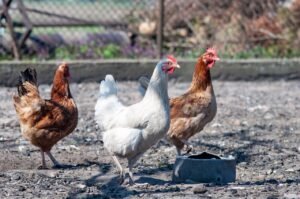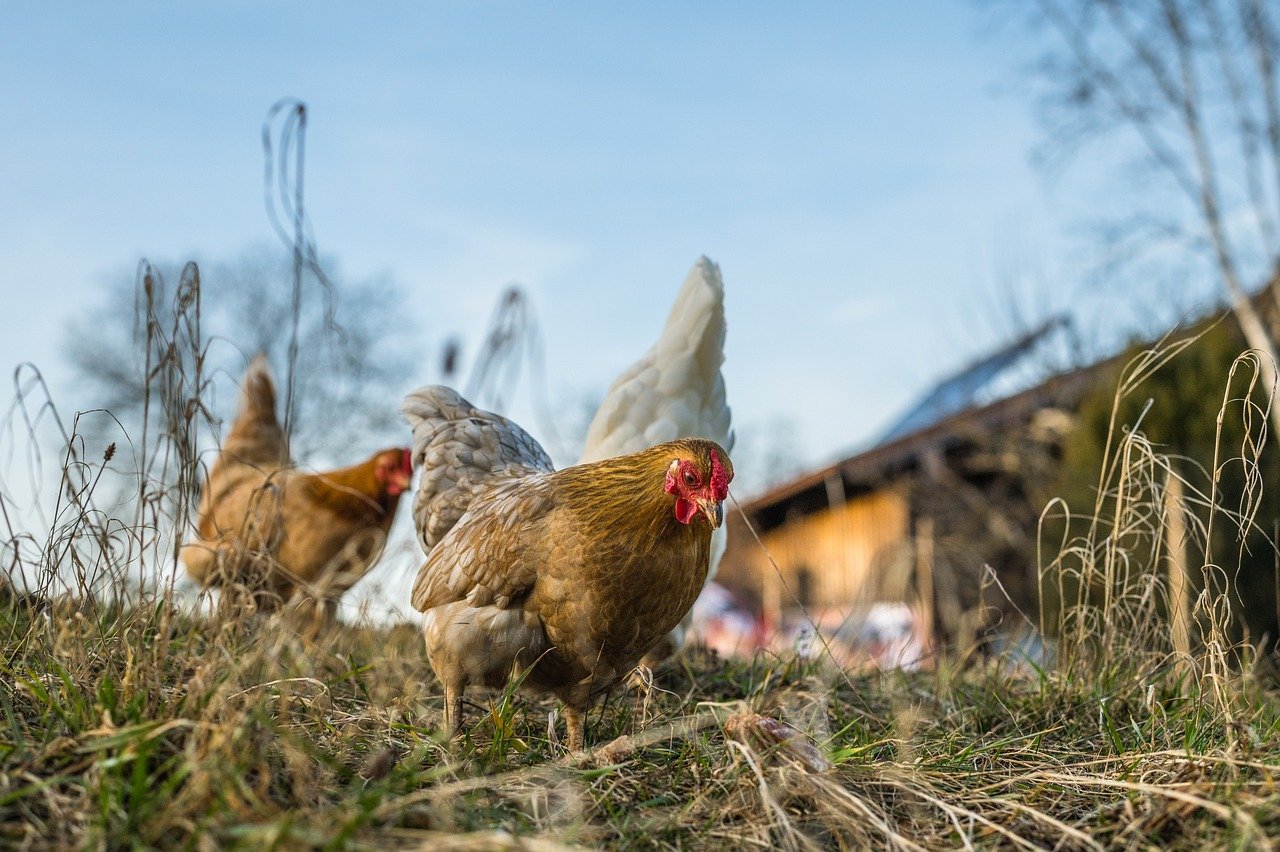
So you’ve decided to expand your flock of feathery friends and you need to learn how to introduce new chickens to the flock. But how do you go about it without causing any pecking order disputes? Don’t worry, we’ve got you covered! In this article, we’ll share some friendly tips and tricks to help you with introducing new chickens to the flock. So get ready to feather your nest with some expert advice!
How to Introduce New Chickens to the Flock – The Process
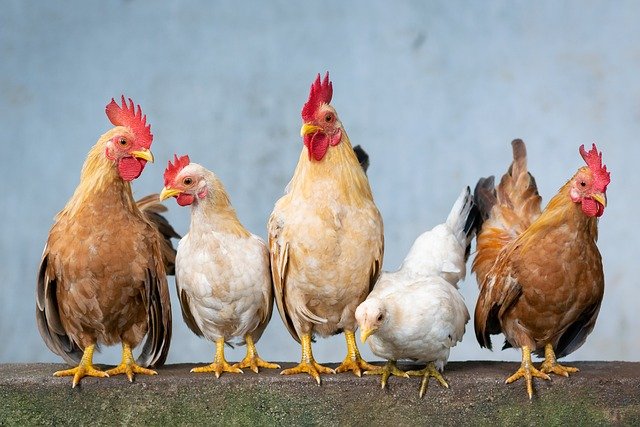
Why Introducing New Chickens to a Flock Should Be Done Gradually
When it comes to introducing new chickens to an existing flock, taking a gradual approach is crucial. Chickens have a well-established hierarchy known as the pecking order, and adding newcomers can disrupt this delicate balance. Introducing chickens slowly helps minimize stress, aggression, and potential injuries among the members of the flock. By following a step-by-step process, you can ensure a smoother integration and promote harmony within your flock.
Understanding the Pecking Order When Introducing New Chickens to the Flock
Before diving into the process of introducing new chickens, it is essential to grasp the concept of the pecking order. The pecking order determines the social hierarchy within the flock, with dominant chickens at the top and subordinate ones at the bottom. This established ranking helps maintain order, allocate resources, and reduce conflict. When new chickens are introduced, they need to find their place in the pecking order, which can result in scuffles and squabbles. Understanding this natural behavior will help guide you through the integration process.
Factors to Consider Before Introducing New Chickens to a Flock
Before introducing new chickens to your existing flock, there are several factors you should consider. The size of your existing flock plays a significant role as it affects the dynamics and the ability of newcomers to integrate smoothly. Additionally, the available space and shelter must be adequate to accommodate the increased number of chickens. You should also assess the temperament and health of your existing flock to ensure compatibility with the new members. Taking these factors into account will set the stage for a successful introduction.
How to Introduce New Chickens – Preparing for the Introduction

Quarantine: A Crucial Step
Before introducing new chickens to your flock, it is absolutely crucial to quarantine them first. Quarantining is a necessary step to prevent the spread of diseases or parasites from the newcomers to the existing flock. Ideally, keep the new chickens in a separate coop or area for at least three to four weeks. During this time, observe their health, behavior, and overall condition to ensure they are not carrying any illnesses. Quarantining significantly reduces the risk of introducing health issues to your established flock.
Choosing the Right Time and Weather
Timing is essential when introducing new chickens to an existing flock. It is generally recommended to introduce new chickens during mild weather conditions, such as spring or fall, when the temperatures are moderate. Extreme weather conditions can add stress to the integration process, making it more challenging for the new and existing chickens to adapt. Additionally, avoid introducing chickens during molting periods, as this can further disrupt the flock dynamics.
Providing Adequate Space and Shelter
Before the introduction, ensure that your existing coop and run provide sufficient space and shelter for the increased number of chickens. Crowded and cramped living conditions can exacerbate stress and aggression within the flock. Ideally, each chicken should have at least 4 square feet of coop space and 10 square feet of outdoor space. Providing multiple roosting bars, nesting boxes, and sources of food and water will also help minimize conflicts over resources. A well-designed and spacious environment promotes a healthier and more harmonious integration process.
Introducing New Chickens to the Flock
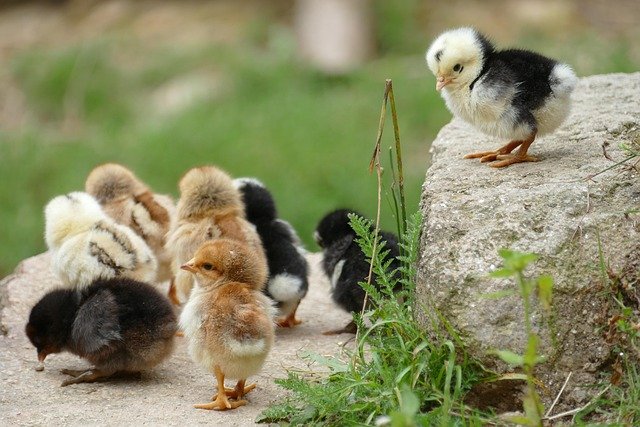
Using the ‘See but Don’t Touch’ Method
One effective method for introducing new chickens is the ‘See but Don’t Touch’ approach. This involves allowing the existing flock and newcomers to see each other without any physical contact. Start by placing the new chickens in a separate but adjacent run or enclosure, allowing them to observe and familiarize themselves with the established flock. This gradual visual introduction helps reduce shock and hostility when direct interactions eventually occur.
Short Limited Period Exposure
Once the chickens have become accustomed to seeing each other, you can proceed to short periods of limited exposure. This involves letting the new chickens and existing flock mingle under close supervision for brief intervals, such as 15-30 minutes at a time. This controlled exposure allows for initial interactions and helps establish familiarity without prolonging potential conflicts. Be prepared to intervene if any aggression or bullying occurs during these early introductions.
Supervised Integration in Neutral Territory
To facilitate a smoother integration, it can be beneficial to introduce the chickens in neutral territory, away from the established coop and run. This prevents territorial disputes and gives each chicken an equal chance to establish their place in the pecking order. Allow the chickens to interact on neutral ground while closely monitoring their behavior. Having multiple supervisors present can help manage any conflicts and ensure the safety of all birds involved.
Monitoring and Minimizing Conflict
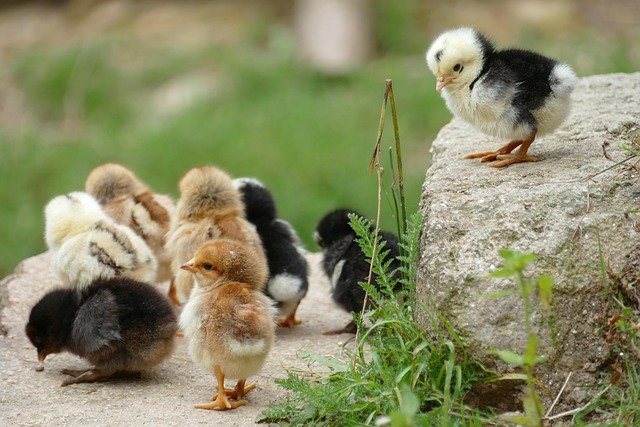
Observing the Flock Dynamics
Throughout the integration process, it is crucial to closely observe the flock dynamics. Watch for any signs of aggression, bullying, or excessive pecking. Some initial squabbles are to be expected as the pecking order is reestablished, but continuous and severe aggression should be addressed. Pay attention to changes in behavior, such as excessive stress, feather loss, or decreased appetite, which may indicate ongoing conflicts.
Addressing Aggression and Bullying
If you notice persistent aggression or bullying during the introduction process, it is essential to take immediate action. Remove any overly aggressive or particularly dominant chickens temporarily. This separation allows the newcomers and less dominant members of the flock to establish their position without constant harassment. Reintroducing the separated chickens later, using different techniques, can help minimize aggression and encourage a more successful integration.
Providing Multiple Food and Water Sources
To minimize conflict over resources, ensure that ample food and water sources are available to all chickens. Place multiple feeding stations and water containers in different areas of the coop and run to disperse the flock during mealtimes. This prevents dominant chickens from hogging the resources and reduces the likelihood of aggressive behavior. Regularly check and refill the feeders and waterers to ensure that everyone has access to fresh food and water at all times.
Long-Term Integration
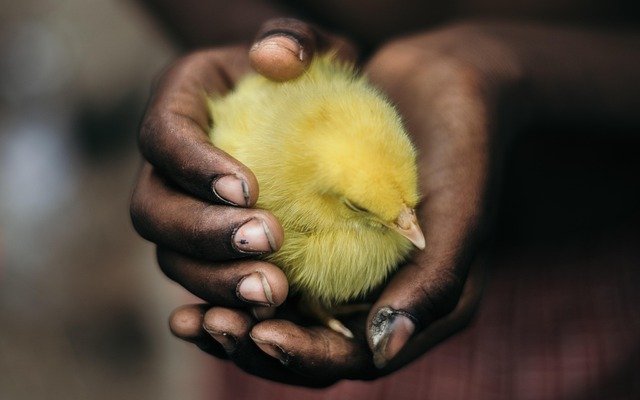
Gradually Increasing Interaction Time
Once initial introductions have been successful and conflicts are minimal, gradually increase the time the chickens spend together. Allow supervised interactions for longer periods, gradually building up to full integration. Use your observations of the flock dynamics to gauge when the chickens have established a harmonious coexistence. Patience is key during this phase as each flock is unique, and integration timelines can vary.
Keeping an Eye on Behavioral Changes
Throughout the long-term integration process, it is essential to continue monitoring the behavior of the chickens. Watch for any signs of stress, aggression, or sudden changes in behavior that may indicate ongoing conflicts. Frequent inspections of the flock will help you identify and address any emerging issues promptly. By staying vigilant, you can maintain a balanced and cohesive flock environment.
Ensuring Sufficient Resources for All
As the new chickens become fully integrated into the existing flock, it is vital to ensure sufficient resources for all birds. Monitor the feeding and watering routines to ensure that each chicken has an equal opportunity to access food and water. Smaller or more submissive chickens may require extra attention to ensure they are not being bullied or excluded from essential resources. By maintaining adequate resources, you can foster a cooperative environment within your flock.
Tips to Help you with Introducing Chickens to the Flock Successfully
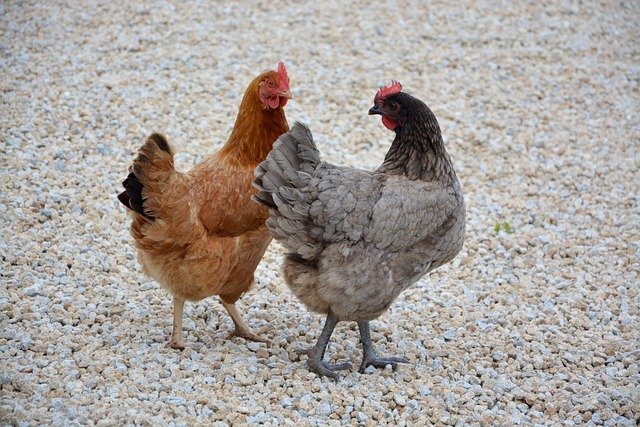
Introducing Chickens of Similar Size
When introducing new chickens, it is generally best to choose ones that are similar in size to your existing flock. This helps prevent significant discrepancies in strength and reduces the likelihood of excessive bullying or aggression. Chickens of similar size have a better chance of integrating smoothly and establishing themselves within the pecking order more easily.
Adding Multiple New Chickens Simultaneously
Introducing multiple new chickens simultaneously can be advantageous for integration. Adding several new chickens at once disrupts the existing flock dynamics less compared to adding them one at a time. With multiple newcomers, the pecking order is more likely to shift with less intense disruption and aggression towards individual chickens. However, ensure that your coop and run are adequately sized to accommodate the increased number of birds.
Introducing Chickens at Night
Introducing new chickens at night can help minimize initial conflicts. Chickens are less active after dark and are more likely to focus on roosting and settling in their new surroundings. By introducing the newcomers at night, they have an opportunity to familiarize themselves with the coop and establish their roosting spot before the morning when the existing flock wakes up. This nighttime introduction can reduce confrontations and promote a smoother integration.
What to Do If Introductions Fail
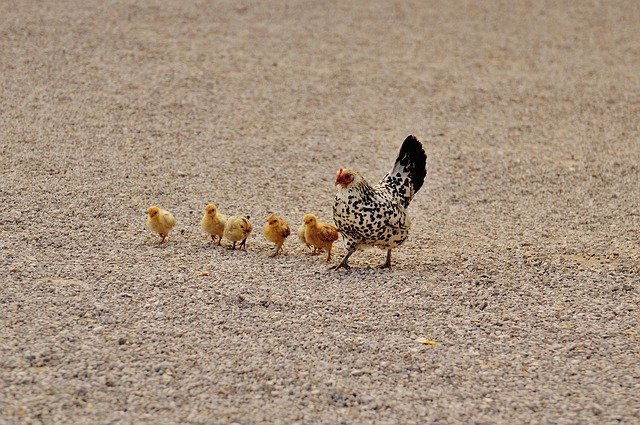
Separating Aggressive Chickens
If the integration process fails and aggression persists, it may be necessary to separate the aggressive chickens from the rest of the flock. Isolating them in their own enclosure allows you to reevaluate the integration strategy and explore alternative methods. Separating the aggressive chickens also provides an opportunity for them to calm down and readjust their behavior before reintroduction.
Reintroducing Chickens Using Different Techniques
If initial introductions fail, it may be necessary to try different techniques for reintroducing the chickens. This could include starting the process from an earlier stage, adjusting the timing or location of the introductions, or seeking advice from experienced chicken keepers or poultry experts. Each flock is unique, and what works for one may not work for another, so be prepared to be flexible and try alternative approaches.
Seeking Expert Advice
If you are struggling with integrating new chickens into your existing flock, do not hesitate to seek expert advice. Local poultry clubs, agricultural extension services, or knowledgeable chicken owners can provide valuable insights and guidance tailored to your specific situation. Their expertise and experience can help troubleshoot any challenges you may be facing and offer practical solutions for a successful integration.
How to Introduce New Chickens – Different Chicken Ages
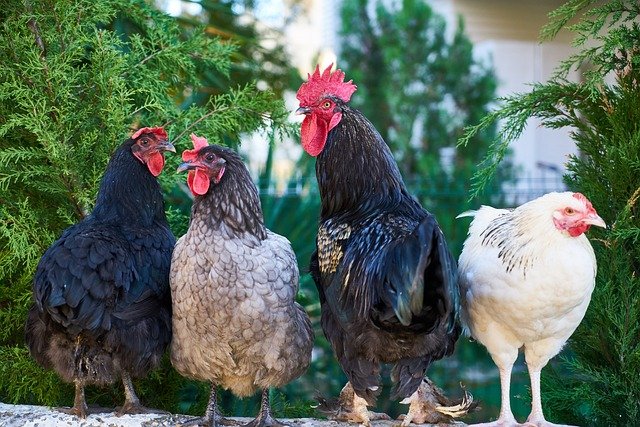
Introducing Chicks to an Existing Flock
Introducing chicks to an existing flock requires special care and supervision. The size and vulnerability of the chicks make them easy targets for aggression from adult chickens. Provide a separate brooder box within the coop or run, where the chicks can observe and acclimatize to the presence of the adult chickens. Ensure that the brooder box is secure and provides adequate warmth, food, and water for the chicks. As the chicks grow and become more resilient, gradually increase their exposure to the adult chickens under close supervision.
Introducing Juveniles to Adult Chickens
Introducing juvenile chickens to an existing flock is typically easier compared to chicks. Juveniles are more self-sufficient and less likely to be seen as vulnerable targets. Follow the same gradual introduction process outlined earlier, allowing the juveniles and adult chickens to see each other before proceeding to brief supervised interactions. It is essential to closely monitor the interaction between juvenile and adult chickens, stepping in if any bullying or aggression occurs.
Adding Adult Chickens to an Established Flock
Introducing adult chickens to an established flock may present its own challenges. Adult chickens have already established their place in the pecking order and may resist the presence of newcomers. To integrate adults successfully, ensure that they are healthy, well-socialized, and of similar size to the existing chickens. Follow the same gradual introduction process, starting with visual interactions before moving on to supervised exposure. Keep a close eye on behaviors and address any conflicts promptly to avoid prolonged aggression.
Introducing Different Chicken Breeds to the Flock
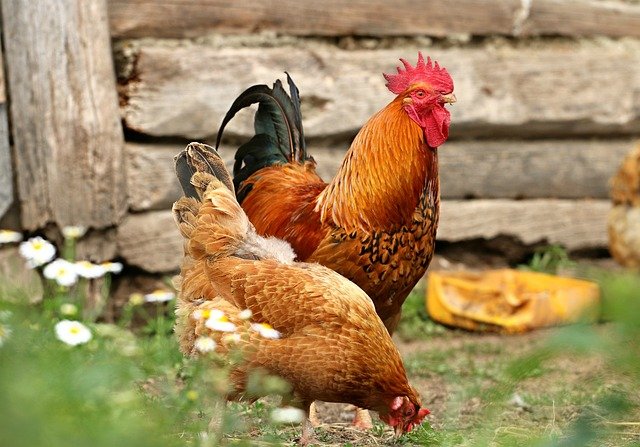
Understanding Breed Characteristics
Before introducing different chicken breeds, it is important to understand their specific characteristics. Different breeds have varying temperaments, energy levels, and social behaviors. Some breeds are naturally more docile and accepting of newcomers, while others may be more prone to aggression. Research the specific breed characteristics and choose compatible breeds to increase the chances of successful integration.
Introducing Calm and Gentle Breeds
When introducing new breeds, opt for calm and gentle breeds that are known to coexist well with others. These breeds are typically less aggressive and more adaptable, making integration easier. Gentle breeds, such as Australorps, Wyandottes, or Orpingtons, are often good choices for peaceful integrations. Their mellow personalities and friendly demeanor can help minimize potential conflict during the introduction process.
Considering Size and Temperament
When introducing different chicken breeds, consider both size and temperament. Choosing breeds of similar size ensures a more even playing field when it comes to establishing the pecking order. Additionally, matching breeds with similar temperaments can aid in smoother integration. Aggressive or more dominant breeds may not be a good fit for a flock with predominantly docile chickens. Understanding the dynamics of size and temperament will help create a more balanced and cohesive flock.
Conclusion
Introducing new chickens to an existing flock is an exciting but delicate process. By following a gradual and thoughtful approach, you can minimize stress, aggression, and potential conflicts. Begin by understanding the importance of gradual introductions and the dynamics of the pecking order. Prepare for the introduction by quarantining new chickens, choosing the right time and weather, and ensuring sufficient space and shelter.
When introducing the new chickens, utilize techniques like the ‘See but Don’t Touch’ method, short limited exposure, and supervised integration in neutral territory. Throughout the process, monitor and address any aggression or bullying, while gradually increasing interaction time and providing sufficient resources for all chickens. Consider tips such as introducing chickens of similar size, adding multiple new chickens simultaneously, and introducing chickens at night.
If introductions fail, separate aggressive chickens, try different techniques, and seek expert advice when needed. Lastly, take into account the age and breed of the chickens being introduced to ensure successful integration. With patience, observation, and proper care, you can create a harmonious and thriving chicken flock.
